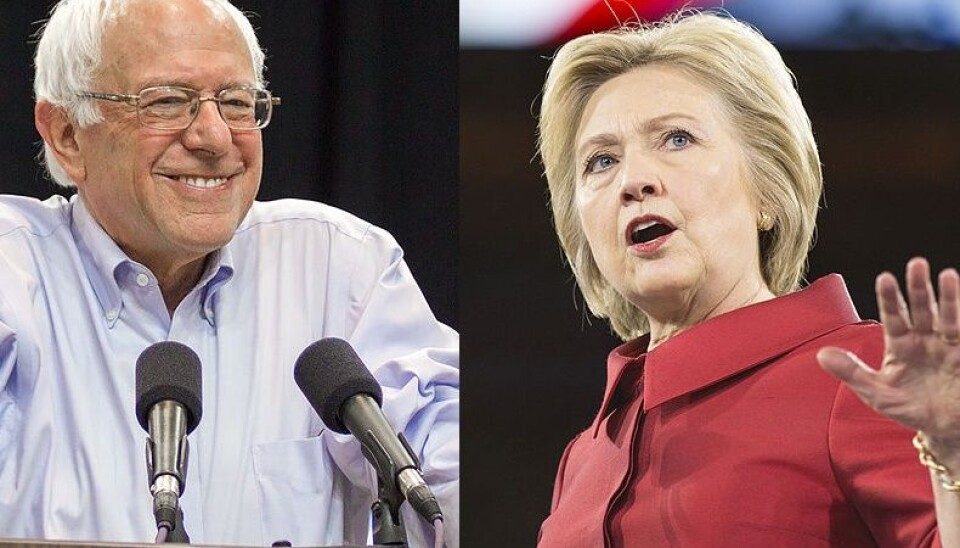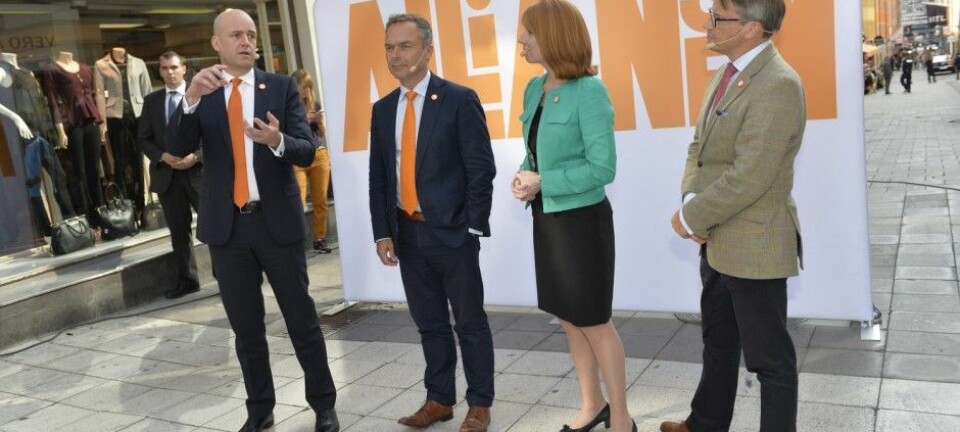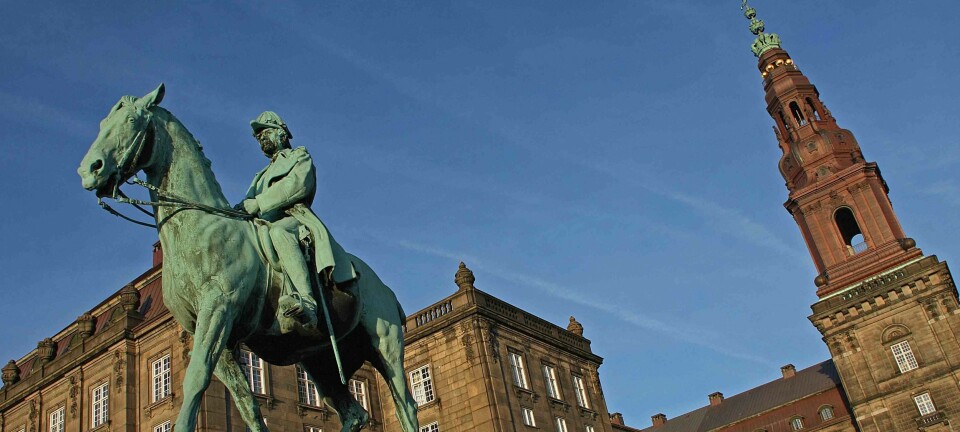An article from Norwegian SciTech News at NTNU

The Democrats’ difficult national convention
The Democratic Party has a big problem as the Democratic National Convention approaches in late July. Will an unpopular Hillary Clinton manage to unite the party? Professor of political science shares her thoughts on the matter.
The Democratic Party leadership wanted to have Hillary Clinton as their presidential candidate, but the people wanted someone different. Independent candidate Bernie Sanders proved to be very popular, and he did better in the nomination process than many had predicted.
The 2016 Presidential Election
The US presidential election will be held Tuesday, 8 November. All of the members of the US House of Representatives and one-third of the US Senate will also be elected, along with a number of public officials at the state and local level.
The Republicans and Democrats have held a series of primaries and caucuses in different states beginning in February 2016. Donald Trump and Hillary Clinton have won the most votes in respective party's primaries and caucuses and are expected to win the nominations at the conventions.
The formal nomination process takes place at the Republican National Convention in Cleveland, Ohio on 18-21 July and at the Democratic National Convention in Philadelphia, Pennsylvania on 25-28 July.
When Hillary Clinton, in all probability, wins the Democratic nomination at the convention, a great number of people will disagree with the Democratic Party. Will the party be able to unite their voters behind Clinton, or will the party split?
“Democrats are far more divided than Republicans,” says NTNU Professor of Political Science Jennifer Bailey.
“In the Republican Party we see a division between the majority of people and the party leadership. In the Democratic Party the split is between the various voter groups. White voters and the most liberal voters prefer Sanders, whereas the less liberal, African-American and Hispanic voters prefer Clinton. The split between these groups may grow in the future. Several different sub-movements within the Democratic Party could also emerge,” she adds.
Connects with the average citizen
Bailey believes the reason for Sanders’ popularity is that he has managed to capture real emotion at the grassroots level, among ordinary people. This is precisely what happened when the Tea Party movement emerged on the conservative side after Barack Obama came to power.
In 2011, a lot of people demonstrated against social and economic disparities in several places across the United States. The protests became known as the “Occupy Wall Street” movement. The demonstrations soon ended, but the feelings that they evoked still exist among people.
“The question now is whether Sanders will manage to make this a more permanent movement that lives on. The American Dream says that you can succeed through hard work, but today some people are still left behind. Sanders talks about class discrepancies, but American politics lacks a thinking and analysis apparatus around social inequalities. Sanders has figured out a lot, but I think it’s going to take a long time before most Americans accept his view on class in the United States, at the expense of the populist, anti-authoritarian and anti-elite attitudes that have a long history in the United States,” says Bailey.
The longer Bernie Sanders waits to concede the nomination ahead of the convention, the more divided people will become, Bailey says. She believes Democrats now face their toughest convention in a long time.
“Usually presidential nominees shift towards the political centre after the convention, but Sanders wants Clinton to move more to the left. Democrats have traditionally had far less party discipline than the Republicans. The last time the party was this divided was during the 1968 national convention – right after Robert Kennedy’s assassination, when Senator McCarthy and Vice-President Humphrey vied to become the Democratic nominee. The convention actually ended in violent riots,” says Bailey.
Why is Clinton so unpopular?
Bernie Sanders and Donald Trump represent different parties, but still attract some of the same voters. Clinton now needs to snag some of these voters – plus her own traditional voter base.
“Clinton has a strong alliance with the African-American constituency. Hispanic voters, who are the fastest-growing ethnic group in the US, also seem to support Clinton,” says Bailey.
But why is Hillary Clinton still so unpopular among so many voters?
“She’s a very intelligent woman, which a lot of people don’t like. Many Americans don’t like people who try to come across as better than them. On top of that, Hillary is also female, so this may be a problem in itself. She’s also married to Bill Clinton, whom the Republicans hated. She’s connected to some of the old issues that created problems for the Clinton administration. There’s always been a certain ‘sleaze factor’ around the Clintons, and a lot of what they’ve done smacks of something suspicious. Yet Bill Clinton was a master at reaching out to people, but Hillary lacks this popular appeal,” says Bailey.
She adds that it is unusual to have two presidential candidates who are so deeply disliked among people as Hillary Clinton and Donald Trump.
Centralized government weakened
Bailey believes that American politics now faces a major reorganization, but it is difficult to predict exactly what will happen.
According to Bailey, many Americans have lost faith in the system, and the federal government has become weaker over time. A lot of American politics needs to be understood at the state level. The states may become more important in the future, but a weakened federal government will have a harder time in an increasingly complex and globalized world.
But she emphasizes that the chaos that seems to reign in US politics is nothing new.
“The US has always been chaotic. The Cold War masked differences, but now they’ve resurfaced. Actually, America hasn’t resolved its problems from the Civil War yet, and that’s really quite remarkable,” she says.
Bailey also points out that US today is facing enormous demographic changes, not only in terms of race, religion and language, but also regarding economic outlook. By 2044, white Americans are going to be in the minority. The US has lost control of mass immigration, and the disparities among the population are increasing.
“The USA is under tremendous pressure, and it’s completely understandable that people are frustrated. It’s absolutely wrong to say that Americans are racist and stupid. The popular support for a candidate like Trump reflects the major problems that exist in the United States. Will the established parties be able to use the frustration and discontent to build something new—or will party schisms be the result? Might one of the parties change so much that it dissolves, enabling another party to come to the fore? It’s happened before. The US Whig Party split during the discussions on slavery in the late 1800s,” says Bailey.
She thinks the events following the national conventions will be exciting, but the really big question is what will happen during the presidential election in four years. The Republicans have seen that nominating safe candidates at the centre of the political spectrum is not a winning formula and have instead ended up with a Donald Trump.
This leads Bailey to wonder, “What happens if Hillary wins the nomination but loses the election? Will the Democrats be thinking the same thing? Who would then become their presidential candidate in four years?”

































